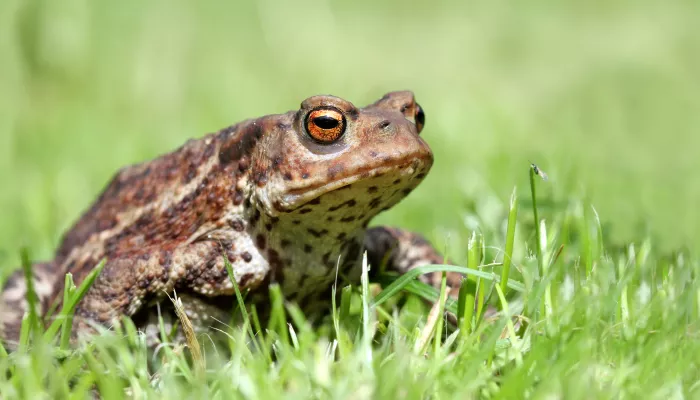About
Common toads are amphibians, breeding in ponds during the spring and spending much of the rest of the year feeding in woodland, gardens, hedgerows and tussocky grassland. They hibernate over winter, often under log piles, stones or even in old flower pots!Toads are famous for their mass migrations back to their breeding ponds on the first warm, damp evenings of the year, often around St. Valentine's Day. Common toads tend to breed in larger, deeper ponds than common frogs. Toad tadpoles contain toxins that make them unpleasant for predators to eat, allowing them to survive in deep ponds containing fish, which would eat the tadpoles of frogs. Adult toads also contain these toxins, stored in their skin glands.
Common toads mainly feed on slugs, snails and other invertebrates, but larger toads have been known to eat small slow worms and grass snakes, and even harvest mice.

